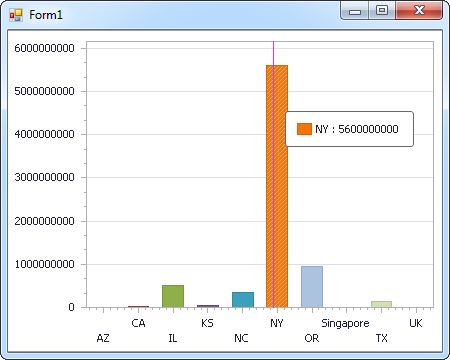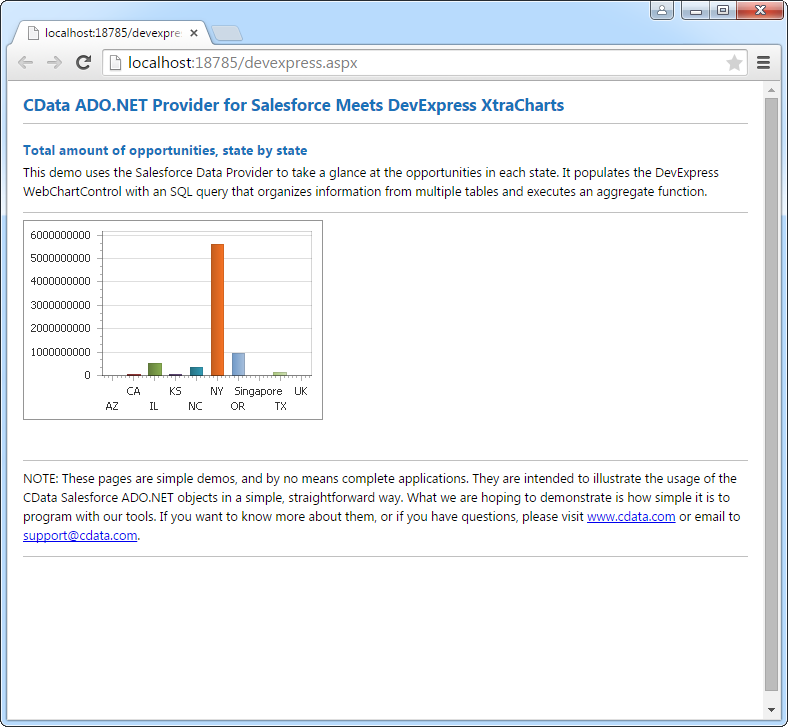Discover how a bimodal integration strategy can address the major data management challenges facing your organization today.
Get the Report →DataBind Google Data Catalog Data to the DevExpress Data Grid
Use the CData ADO.NET Provider for Google Data Catalog with the DevExpress Windows Forms and Web controls to provide Google Data Catalog data to a chart.
The ADO.NET Provider for Google Data Catalog by CData incorporates conventional ADO.NET data access components compatible with third-party controls. You can adhere to the standard ADO.NET data binding procedures to establish two-way access to real-time data through UI controls. This article will demonstrate the utilization of CData components for data binding with DevExpress UI Controls (Windows Forms and Web controls), specifically binding to a chart that visualizes live data.
Google Data Catalog uses the OAuth authentication standard. Authorize access to Google APIs on behalf on individual users or on behalf of users in a domain.
Before connecting, specify the following to identify the organization and project you would like to connect to:
- OrganizationId: The ID associated with the Google Cloud Platform organization resource you would like to connect to. Find this by navigating to the cloud console.
Click the project selection drop-down, and select your organization from the list. Then, click More -> Settings. The organization ID is displayed on this page.
- ProjectId: The ID associated with the Google Cloud Platform project resource you would like to connect to.
Find this by navigating to the cloud console dashboard and selecting your project from the Select from drop-down. The project ID will be present in the Project info card.
When you connect, the OAuth endpoint opens in your default browser. Log in and grant permissions to the application to completes the OAuth process. For more information, refer to the OAuth section in the Help documentation.
Windows Forms Controls
The code below shows how to populate a DevExpress chart with Google Data Catalog data. The GoogleDataCatalogDataAdapter binds to the Series property of the chart control. The Diagram property of the control defines the x- and y-axes as the column names.
using (GoogleDataCatalogConnection connection = new GoogleDataCatalogConnection(
"ProjectId=YourProjectId;InitiateOAuth=GETANDREFRESH")) {
GoogleDataCatalogDataAdapter dataAdapter = new GoogleDataCatalogDataAdapter(
"SELECT Type, DatasetName FROM Schemas WHERE ProjectId = 'bigquery-public-data'", connection);
DataTable table = new DataTable();
dataAdapter.Fill(table);
DevExpress.XtraCharts.Series series = new DevExpress.XtraCharts.Series();
chartControl1.Series.Add(series);
series.DataSource = table;
series.ValueDataMembers.AddRange(new string[] { "DatasetName" });
series.ArgumentScaleType = DevExpress.XtraCharts.ScaleType.Qualitative;
series.ArgumentDataMember = "Type";
series.ValueScaleType = DevExpress.XtraCharts.ScaleType.Numerical;
chartControl1.Legend.Visibility = DevExpress.Utils.DefaultBoolean.False;
((DevExpress.XtraCharts.SideBySideBarSeriesView)series.View).ColorEach = true;
}

Web Controls
The code below shows how to populate a DevExpress Web control with Google Data Catalog data. The GoogleDataCatalogDataAdapter binds to the Series property of the chart; the Diagram property defines the x- and y-axes as the column names.
using DevExpress.XtraCharts;
using (GoogleDataCatalogConnection connection = new GoogleDataCatalogConnection(
"ProjectId=YourProjectId;InitiateOAuth=GETANDREFRESH"))
{
GoogleDataCatalogDataAdapter GoogleDataCatalogDataAdapter1 = new GoogleDataCatalogDataAdapter("SELECT Type, DatasetName FROM Schemas WHERE ProjectId = 'bigquery-public-data'", connection);
DataTable table = new DataTable();
GoogleDataCatalogDataAdapter1.Fill(table);
DevExpress.XtraCharts.Series series = new Series("Series1", ViewType.Bar);
WebChartControl1.Series.Add(series);
series.DataSource = table;
series.ValueDataMembers.AddRange(new string[] { "DatasetName" });
series.ArgumentScaleType = ScaleType.Qualitative;
series.ArgumentDataMember = "Type";
series.ValueScaleType = ScaleType.Numerical;
((DevExpress.XtraCharts.SideBySideBarSeriesView)series.View).ColorEach = true;
}







